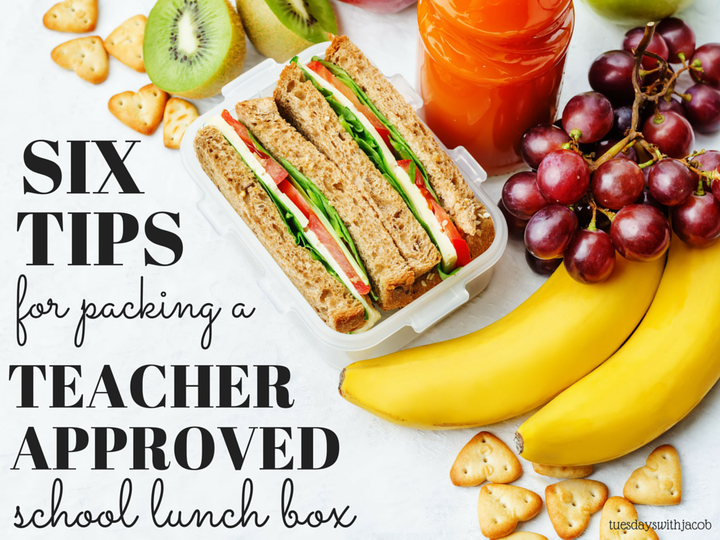
July is rapidly coming to a close, which means as much as I hate to admit it, school is right around the corner. You’ll soon be starting to get your little ones ready to head off to school, and with that comes a new challenge: the lunch box.
Over the 10 years I’ve taught as a kindergarten teacher, I have seen it all, from a lunch box that contained nothing but cookies and chips to one that contained a completely frozen Lean Cuisine. Lunch time is SO important for re-fueling and filling your little one with the nutrients they need to focus for an afternoon of learning. Here are my top tips for packing a teacher-approved lunch box!
1. Make sure your child can open everything independently.
Most schools have one or two lunch aides helping in the cafeteria if they are lucky. Most also have an entire grade level eating at the same time, which means the staff-to-student ratio can be anywhere from 1:50 to 1:200. As you can imagine, your child might be waiting a bit if they need help. Making sure they can open everything on their own will give them their full time to eat. Practice, practice, practice ahead of time! Can they pull back the cover of their Lunchable? Get their straw out of its plastic casing and into the juice box? Can they successfully open and close their thermos, Ziploc bags and plastic ware? Independence in the lunch room is our goal!
2. Send any needed utensils.
Some schools have utensils available. Most don’t. Send a fork or a spoon if your child will need it for soup, yogurt, noodles, etc. If your child will need a utensil for snack time also, send two. Chances are the utensil they use at lunch time will get thrown away, and then they won’t have one for snack time. Re-usable metal utensils are awesome, but make sure your child really understands that they are not to be thrown away. Perhaps designate a special pocket or compartment of the lunch box just for them.
3. Keep snack separate.
If your child’s class will have snack time, find some way to designate the snack as something that should not be eaten at lunch time. You could keep it in a special reusable snack bag or container or keep it in the backpack, out of the lunch box all together. If the snack is in the lunch box with the rest of the food, chances are your child will eat it at lunch time and then have nothing to eat at snack time.
4. Don’t count on there being a microwave or a fridge.
Most schools do not have a microwave or the adults to help with one. Don’t send anything that will need to be heated up. If you are sending something warm, invest in a good thermos, and it will keep your child’s food warm until lunch time! On the reverse, make sure you plan to keep the lunch box cold. Most teachers don’t have fridges in their rooms for students to keep their lunches in. You can either use an ice pack, or a great tip is to freeze a yogurt tube! The yogurt tube will keep the other food cold and will be thawed out by lunch time!
5. This is not the time to experiment with new foods.
Lunch time is often the only chance your child has to refuel for a full 8-hour day (or longer!) of learning. As teachers, we really need your child to eat so that they can focus. A hungry child is not going to be able to keep their mind on anything other than their empty stomach. Please, please, on behalf of teachers everywhere, send food you know your child likes. If you want to introduce your child to new foods, try them out at dinner or on the weekends. THEN, if your child likes them, you could send them in their lunch box to school.
6. No, they don’t need dessert.
We’re looking for a well-rounded lunch here, ideally one that is high in protein and low in sugar. Sugar gets your child’s body all jazzed up (I promise their teacher doesn’t want that) and then leaves it to crash and burn. A child that has crashed and burned from a sugar high is not going to be able to accomplish anything, let alone their school work. A little sweet here or there, maybe on a Friday as a special treat is fine, but try not to load the lunch box up with junk food.
And one more BONUS tip!
Pay attention to any allergy information.
This doesn’t happen all that often, but if your child’s teacher gives out any information regarding allergies in the class, FOLLOW IT. Your kid may love peanut butter, but it’s not worth risking another child’s life. Our goal as teachers is to keep everyone happy, safe, and learning at school. Following any instructions regarding allergies will help us accomplish that. If it was your child, you would want the same.
Hope you find these tips useful as you start assembling school lunches, and I wish you all the most wonderful school year!!